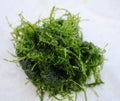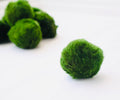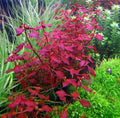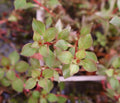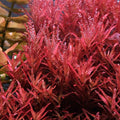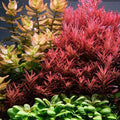How to Get Your Aquarium Plants Beautifully Red
Do you ever wonder how others get their plants super red with ease, while yours keep getting greener? It feels like there's some secret that only certain people have discovered. In reality, it’s just a few simple tricks that any aquarist can try. Guess what? It’s not just about adding more iron.
Why Do Aquarium Plants Turn Red?
Plants produce a compound called anthocyanin as a response to various stress conditions such as intense light, UV radiation, or nutrient deficiencies. This compound acts as an antioxidant and gives plants their red or purple coloration.
So if your goal is to get plants red, your job is to stimulate anthocyanin production strategically and safely.
Do You Need CO₂ for Red Plants?
Many aquarists assume that CO₂ injection is required to grow red plants. While CO₂ does help with overall plant health—and healthy plants are more likely to show vibrant colors—it isn’t always essential.
Some species like Red Otus and Ludwigia Super Red can turn red without CO₂. However, if you're growing more demanding red species, CO₂ can definitely help them thrive and reach peak color.
Is Iron Really the Secret?
You’ve probably heard: “Add more iron!” But here’s the truth…
Iron is not the magic red potion.
It plays a role in chlorophyll production, which keeps plants green and healthy—but it does not directly cause red coloration.
Even the Seachem Flourish Iron product page doesn’t mention red coloration as a benefit. Plus, anthocyanin doesn’t even contain iron in its structure!
That said, iron can help indirectly by supporting overall plant health.
Can Limiting Nutrients Help?
Yes, and here’s where it gets interesting.
Limiting nutrients—specifically nitrogen and phosphorus—can trigger anthocyanin production. Here's how:
-
Low nitrogen reduces chlorophyll, allowing red pigments to become more visible.
-
Low phosphorus can lead to sugar buildup in plant tissues, which promotes red coloration.
In my own 12-gallon setup, I got Rotala Macrandra to turn a deep red by limiting both nitrogen and phosphorus. It’s a delicate balance though—too much stress and your plants will suffer.
Pro tip: Iron and phosphate can also form a precipitate, making both unavailable. So when people say iron helped, it may actually be the resulting phosphate deficiency causing the red color.
How Lighting Affects Red Plants
This is where things get really easy.
Light quality matters even more than quantity. High-intensity light helps, but the real trigger for anthocyanin production is the light spectrum.
Studies show that red light stimulates anthocyanin production (like in strawberries!), and the same applies to aquatic plants. From experience, I’ve seen Hygrophila Corymbosa Compacta grow red under high-intensity lighting with lower blue and green spectrums.
Even tanks with rich nutrient dosing (like EI) can grow red plants if the right light spectrum is used.
Choosing the Right Red Plants
Genetics matter—a lot.
Some plants are simply genetically more inclined to turn red, while others will always lean green, no matter how much light or stress they get.
Examples:
-
Rotala “Blood Red” will generally be deeper red than Rotala “Orange Juice.”
-
Red Root Floaters can vary wildly between tanks depending on genetic strain and light.
One of our Discord members, Dorn, grew incredible deep red root floaters—something I could never achieve with my batch. That’s genetics at work!
Realistic Expectations (Don’t Believe the Filtered Hype)
Be kind to yourself.
What you see online is often enhanced with filters, photo editing, or fancy lighting setups. Don't feel discouraged if your red plants aren’t popping like an Instagram post. Growing red plants takes time, consistency, and a bit of trial and error.
Most importantly: Plants won’t turn red if they’re not healthy. Keep them happy, and color will come.
Final Tips to Get Red Aquarium Plants
To summarize:
-
Use high-intensity lighting with a red-heavy spectrum.
-
Limit nitrogen and phosphorus (carefully!).
-
Don’t rely solely on iron—it helps health, not color.
-
Choose genetically red species.
-
Use CO₂ if you're growing demanding plants, but know it's not always required.
Conclusion
Getting your plants to turn red isn’t about throwing money at fancy additives—it’s about creating the right controlled environment. Balance your light, adjust nutrients strategically, choose the right plants, and above all, be patient. The vibrant reds will come, and the process of getting there is just as rewarding.



